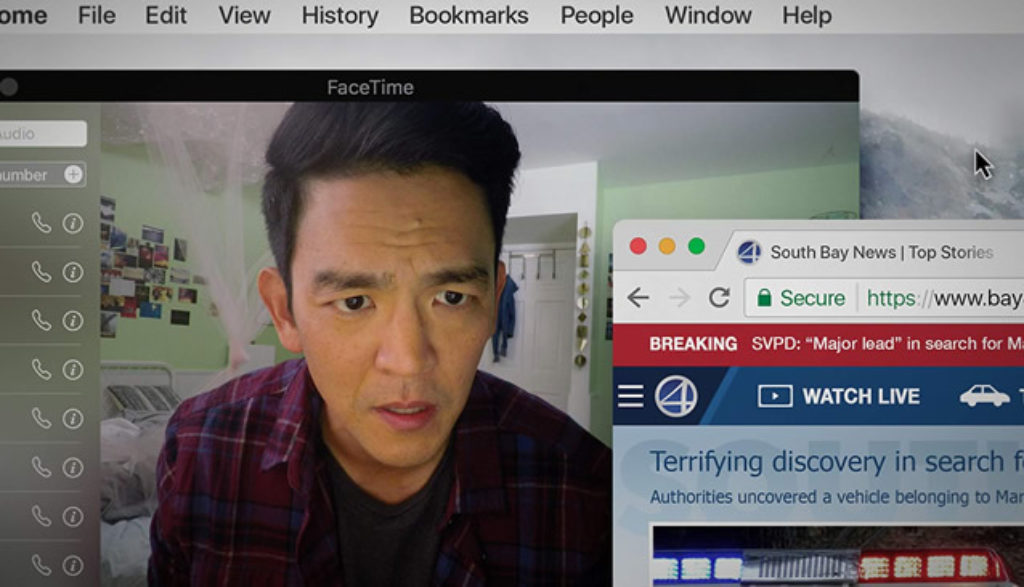
I don’t know her. I didn’t know my daughter.
On a normal Thursday night, David Kim received a call from his daughter, Margot, informing him that she would be studying all night with a group of friends. The next day she was nowhere to be found.
David Kim never thought that his 15-year old would be considered a missing person. He had the perfect family. A beautiful wife, an adorable daughter, a nice house in the suburbs. But when his wife passed away, he couldn’t span the space between him and Margot.
And now he must race against time to find his only child. But what if the Margot he thought he knew isn’t the real Margot at all?
As David digs deeper and deeper into his daughter’s secret online life, it’s a question that haunts him more and more.
David will go to any length to find and protect his daughter (even if that means inflicting pain on others at times, which I’ll deal with below). Similarly, Detective Vick (the lead investigator in Margot’s missing person case) tells David that she too would do anything to help her son and to protect him. That common ground—their passionate parental love—forms the foundation for their relationship in the film.
David watches videos of his wife and daughter, reminiscing about happier times. (We see a video of Margot giving her dad a homemade Father’s Day card, as well as other videos of David and his wife spending quality time with Margot.) David’s brother, Peter, tries to make sure that his brother is doing well, always asking questions about his (and Margot’s) emotional wellbeing. Peter also encourages David to talk with Margot (before her disappearance).
As she grieves her mother’s death, Margot finds love, support and understanding through social media. That’s a good thing to a point. But the film also cautions that this relational outlet leaves her vulnerable in ways she doesn’t really understand.
A memorial service is held in a church.
David reads various texts that suggest Margot was sexually involved with an older male relative. Other suggestive texts include a comment about knowing “how babies are born,” while another asks crudely for “boobies please.” A young man crassly comments “she loves the d.” Someone texts an eggplant emoji (which represents a penis). An older man is called a sick pervert. Women wear revealing outfits.
David punches a wall multiple times, tries to choke another man and puts a teenage boy in the hospital. We see David attack the boy and then later hear how David broke the child’s jaw; we also see David’s bruised chin.
A young woman is found bruised and bleeding; another is thought to be dead. We hear a man confess to beating, crushing and killing his victim. Someone is terrified about being murdered for hiding a secret. The news mentions an ex-convict committing suicide.
A woman dies from cancer. Multiple people post comments on social media sites, accusing innocent people of abduction, abuse and murder. Other people confess to abusive acts.
An angry parent types “f—ing” and then deletes it. Someone texts “fk cancer” and another says the f-word. God’s name is misused about five times (both in spoken dialogue and typed onscreen). Other profanities include “h—” and “d–n.” Someone uses the phrase “screwing around.”
We hear that an older man and a teenager smoke marijuana; it’s mentioned in conversation, and we see marijuana on a countertop. A teenage boy jokes about playing beer pong. A man’s prescription medication sits on a nightstand. A young man posts separate pictures of himself while he’s smoking a hookah and marijuana, drinking and holding a gun. We hear that someone is drugged.
As he grieves his wife’s death, David overlooks his daughter’s pain and grief. Instead of communicating with Margot after her mother’s passing, he ignores his grief in the hope that it will all work itself out. David emotionally disconnects from his friends and family which results in Margot’s relational seclusion, as well as his own.
Margot has full access to technology without David’s parental oversight. She posts videos and gives out personal information to complete strangers, and she goes where she wants without giving her father many details concerning her whereabouts.
As David searches for Margot, he realizes that he doesn’t know very much about his teen girl (or her at times risky social media habits). His searching leads to a lot of frustration, worry, fear and anxiety as he gradually discovers that she has not been honest with him about many things.
Elsewhere in the film, multiple people exploit Margot’s disappearance for their own selfish reasons and gain. Someone stalks a young woman on social media. A scary image pops onto a computer screen. A young man steals money after creating a fake cause. A young woman creates a fake identity and is accused of laundering money.
Aneesh Chaganty, director of Searching, brought this movie to life entirely through screens of various kinds. This cautionary thriller unspools via security cameras, iPhones, Macbooks, YouTube videos and social media messages. Texts and other messages that David sees in Margot’s various accounts also help to advance the plot here.
These different screen-based modes of storytelling overlap to deliver a couple of warnings:
First, Searching warns us of the dangers that exist when we aren’t aware of what our children are doing online. It encourages intentional communication about technology for the sake of our kids and their safety.
Second, the film speaks to shadowy side of the “fame culture” that informs so much of contemporary life these days. We see how some of those who want to be famous and liked will do whatever it takes to make that happen (including making videos that recklessly exploit themselves).
Finally, Searching reminds us that technology is not always negative. In fact, we see how it can even be used to help solve mysteries like this one.
Searching is a provocative film. I’ve never seen a movie crafted entirely through screens like this one is. On a deeper level, the film also prompted me to think about my relationship with my own son, how I want to be present for him emotionally and know what’s going on in his life as he gets older. I want to be aware of social media trends and knowledgeable when it comes to the sites and apps he’ll use in the future. Most of all, I want to protect him at all costs.
Which means that I wouldn’t bring him—or any young viewer—to this movie. It’s not for littles. This film is aimed at an older audience, as it’s filled with suspense and includes some profanity, violence, references to drug use and gripping stories about the dangers of the internet.
Searching is a story that will keep viewers guessing at every click. And it’s also a movie that might stay with some viewers—especially parents of tweens and teens—in a way that goes deeper than just trying to provide a thrilling cinematic ride.


Kristin Smith joined the Plugged In team in 2017. Formerly a Spanish and English teacher, Kristin loves reading literature and eating authentic Mexican tacos. She and her husband, Eddy, love raising their children Judah and Selah. Kristin also has a deep affection for coffee, music, her dog (Cali) and cat (Aslan).